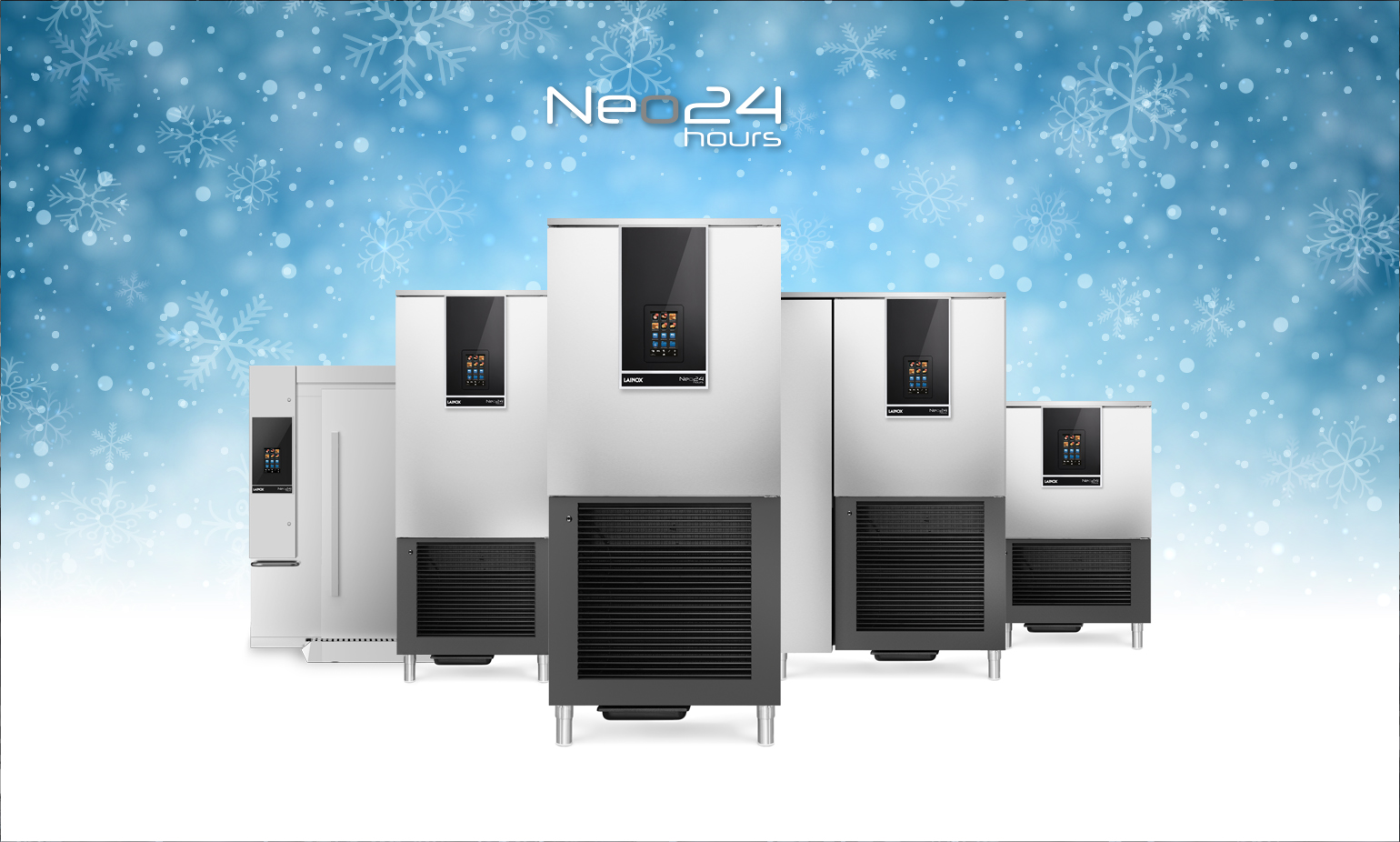A blast chiller is an essential tool in any professional kitchen. It rapidly cool hot foods, bringing them to a very low temperature in order to prevent the proliferation of bacteria and parasites.
A professional blast chiller is in fact able to lower food temperature quickly, cooling it evenly and ensuring that the desired temperature is reached even in the centre.
A blast chiller that is capable of bringing food to a temperature close to 3°C, which is sufficient to counteract bacterial proliferation and comply with HACCP standards, is defined as a "positive blast chiller”. If the equipment, however is programmed to reach temperatures below zero, it is classified as a "negative blast chiller", as it is capable of bringing products down to -20°C without significantly changing their organoleptic characteristics. Unlike a classic freezer, a negative blast chiller is able to lower the temperature so suddenly as to prevent the formation of ice crystals which, once melted, would inevitably change the consistency of defrosted products. The use of a negative blast chiller is also required by law for some types of products (such as raw fish) which could be contaminated by microorganisms capable of withstanding low temperatures, but which cannot stay in such a cold environment for a few hours.
The working mechanics of a blast chiller
The main function of a blast chiller is, as just described, is to reduce product temperature suddenly, for reasons connected both to food safety and to maintaining the organoleptic characteristics of food.
To achieve this, all blast chillers are equipped with a heat exchanger, a tool that transfers energy in the form of heat. In the exchanger there is a low temperature gas capable of absorbing the thermal energy emitted by hot food placed inside the blast chiller chamber. The gas is separated by a wall that isolates it from the inside of the blast chiller. The exchanger allows the blast chiller to function and quickly cool food as soon as it has been removed from heat or an oven. This is unlike the procedure for a traditional freezer, as it is never recommended to put hot food in a freezer.
Air or water cooling? Here's what you should prefer
The gas present inside the exchanger of a blast chiller can be cooled using systems fueled by air or by water.
The use of water, which is less common than air, is normally limited to very particular operating contexts. In fact, the preference for water system is only convenient if there is the possibility of accessing an already naturally cold water source. In this case, taking advantage of the naturally low starting water temperature can allow for significant energy savings as it is ready to cool the refrigerant gas. If, on the other hand, the water source that must be used is at room temperature, and must therefore be artificially cooled, an air system is normally more efficient and preferred.
Lainox professional blast chillers can be powered by both air and water. Our technicians are available for customers to evaluate, case by case, which is the most convenient solution for them in terms of performance, efficiency, and energy saving.
Refrigerant gases: Be careful when you choose
As we have described, there are many advantages to using a blast chiller, but when choosing which type of blast chiller to buy, it is important to pay attention to one particular aspect.
The heat exchangers of blast chillers use refrigerant gases which, if dispersed into the atmosphere, in fact, cause pollution and climate change. Over time, national and international regulations relating to the use of these gases has evolved, and many gases that were commonly used in the past have gradually been banned for environmental protection reasons. This is the case, for example, for F-gases (hydrofluorocarbons - HFCs) which are now illegal in the European Union. Other solutions that have a smaller impact on the stratospheric ozone layer and global warming must be used.
Today, various natural refrigerants are commercially available, such as R-290 gas. It is a valid alternative to synthetic refrigerants because it pollutes much less and allows you to obtain equal or superior performance compared to other gases. Its use is not yet mandatory, but the constant evolution of regulations allows us to assume that the push towards solutions of this type will be increasingly more prevalent, at the European, but also global level.
Precisely for this reason, production companies that want to move towards green solutions can immediately choose to acquire equipment that uses natural refrigerant gases, such as R-290. Lainox blast chillers can all be equipped with gases of this type and are, therefore, an ideal solution for those looking for process equipment that is both is high performing and environmentally friendly at the same time.
Would you like to know more?

















